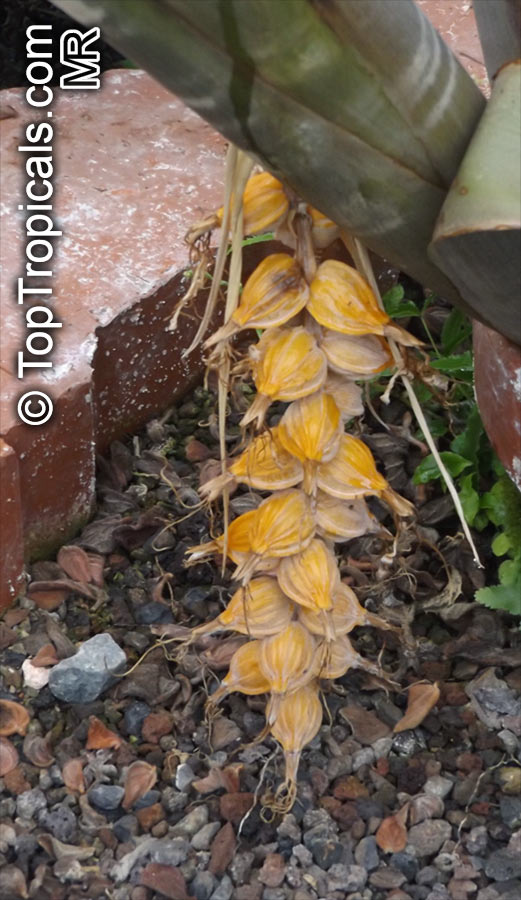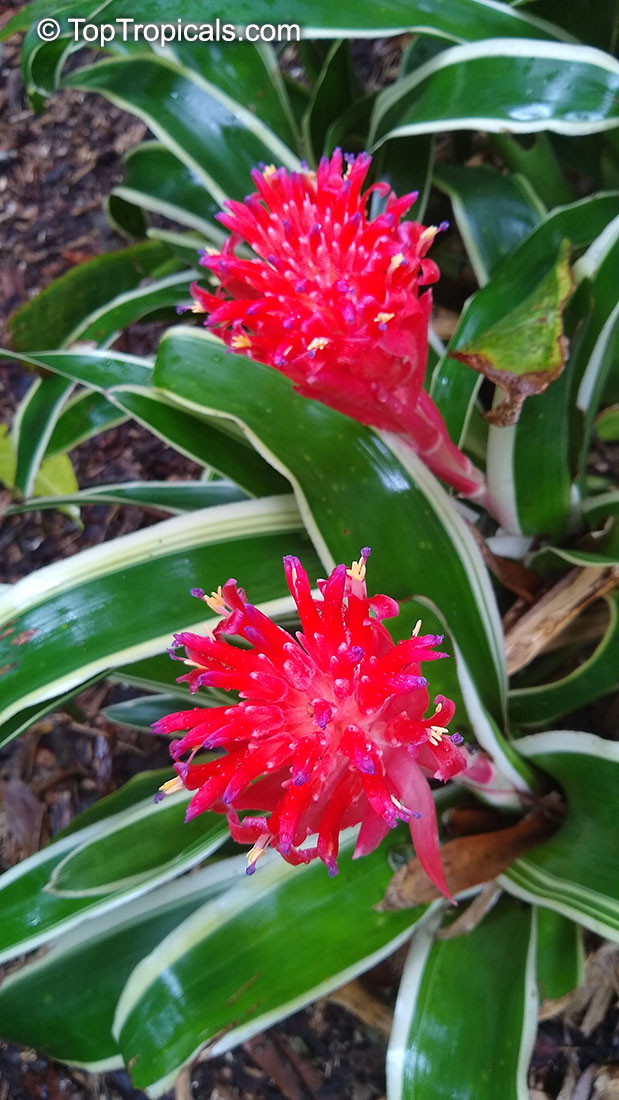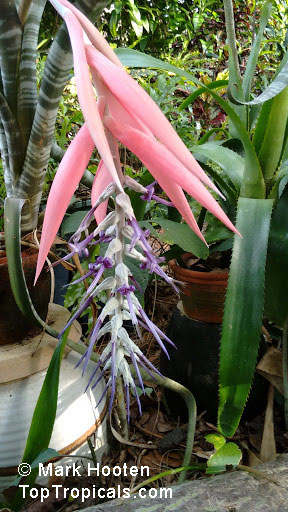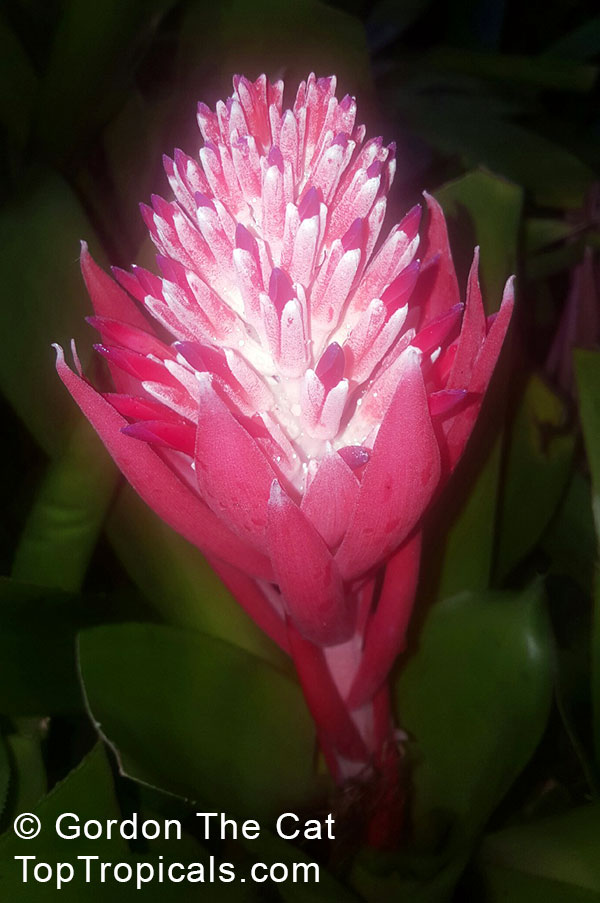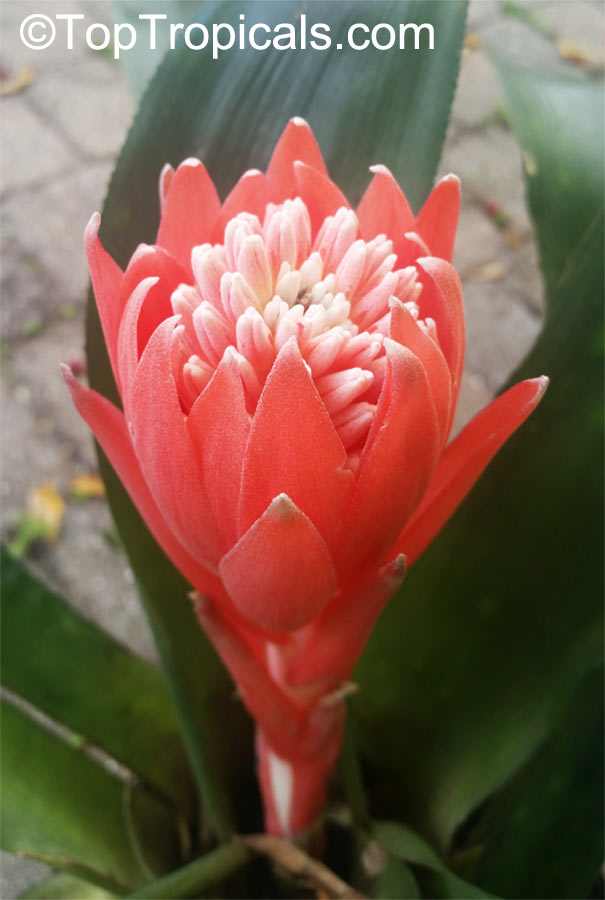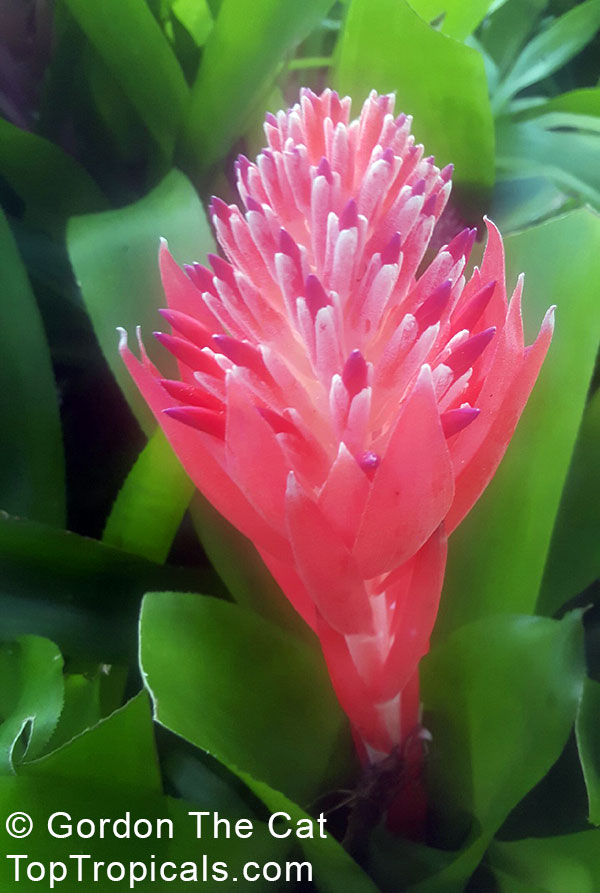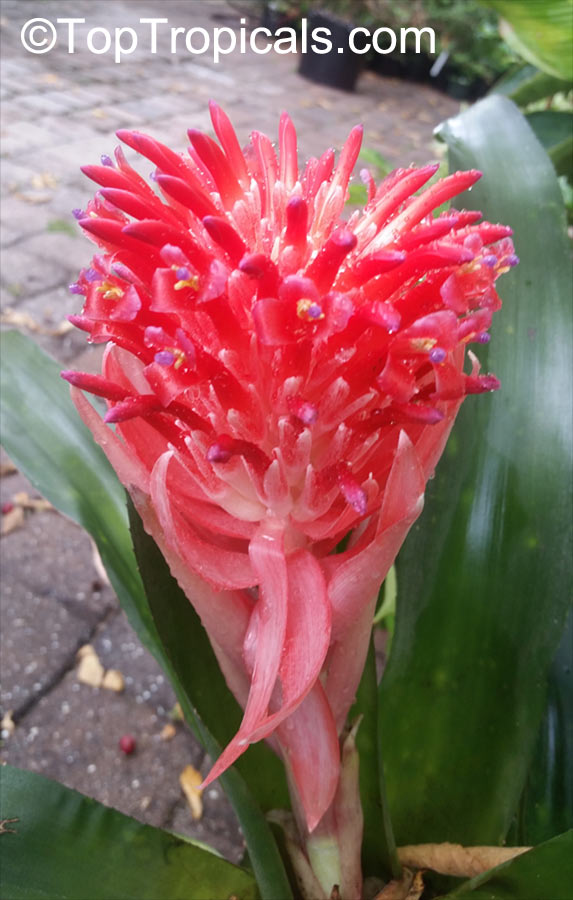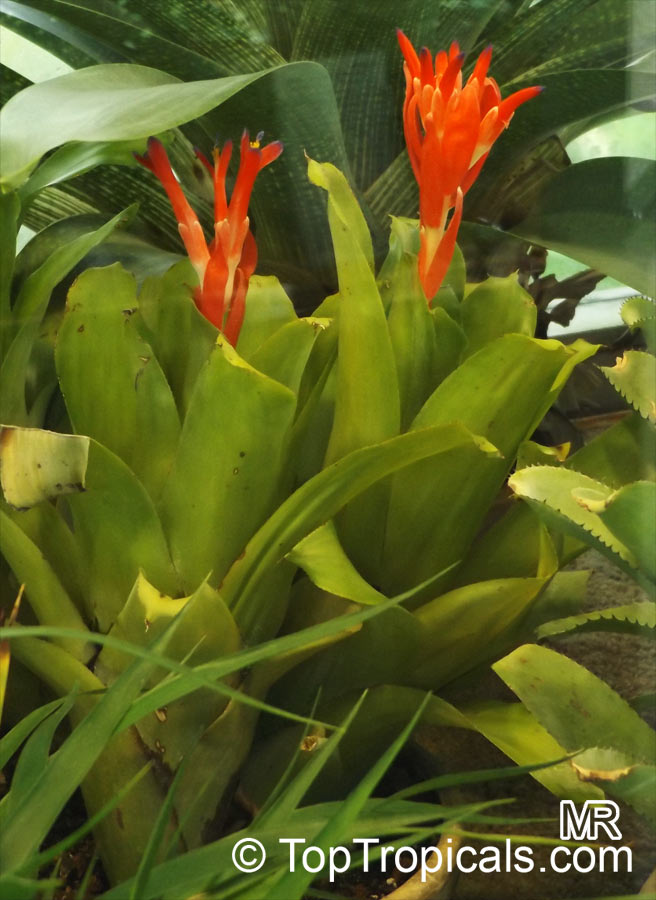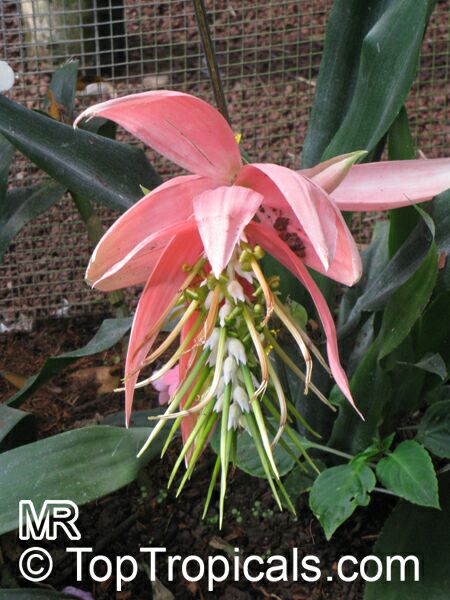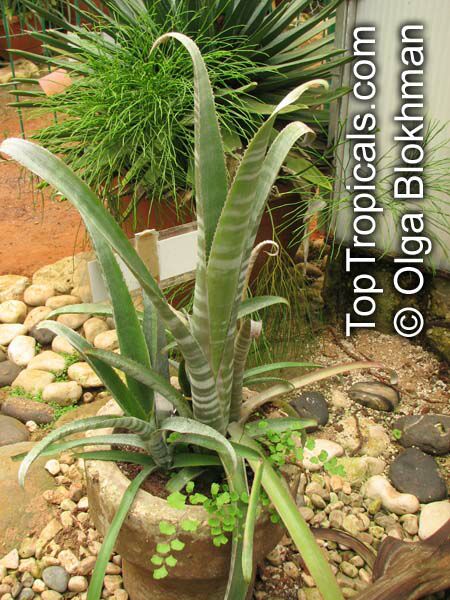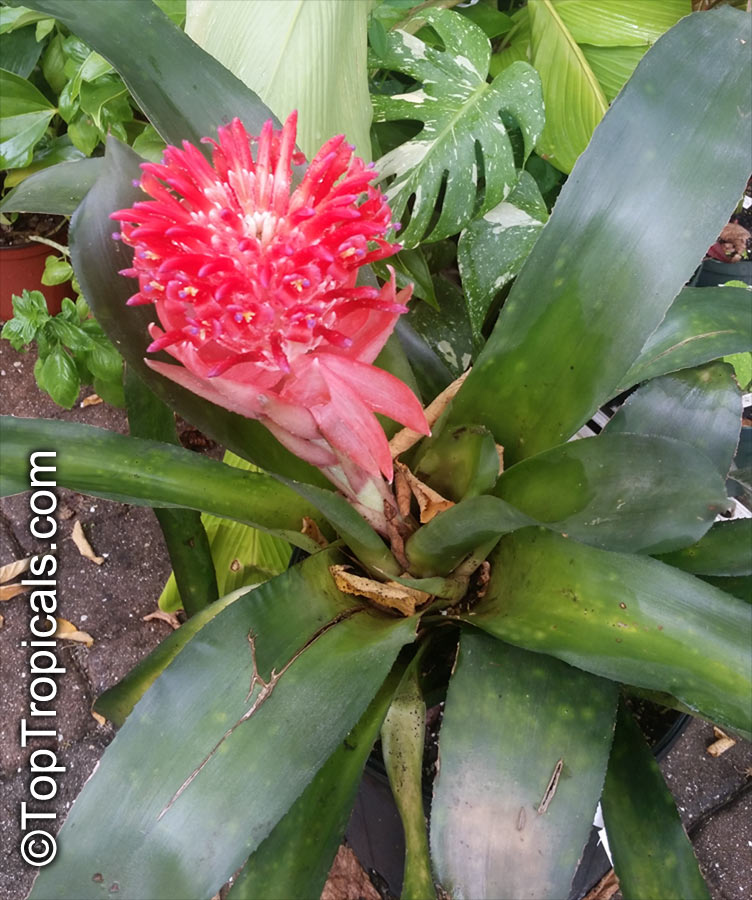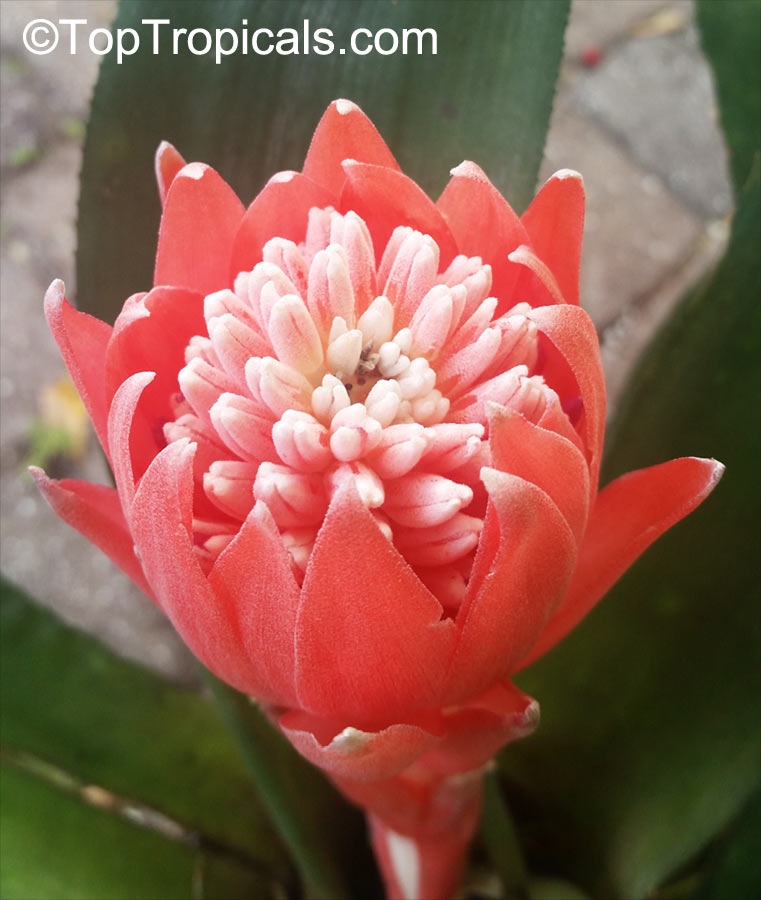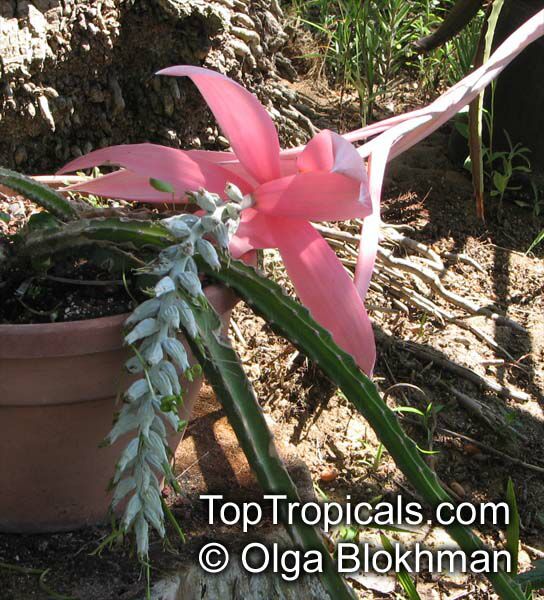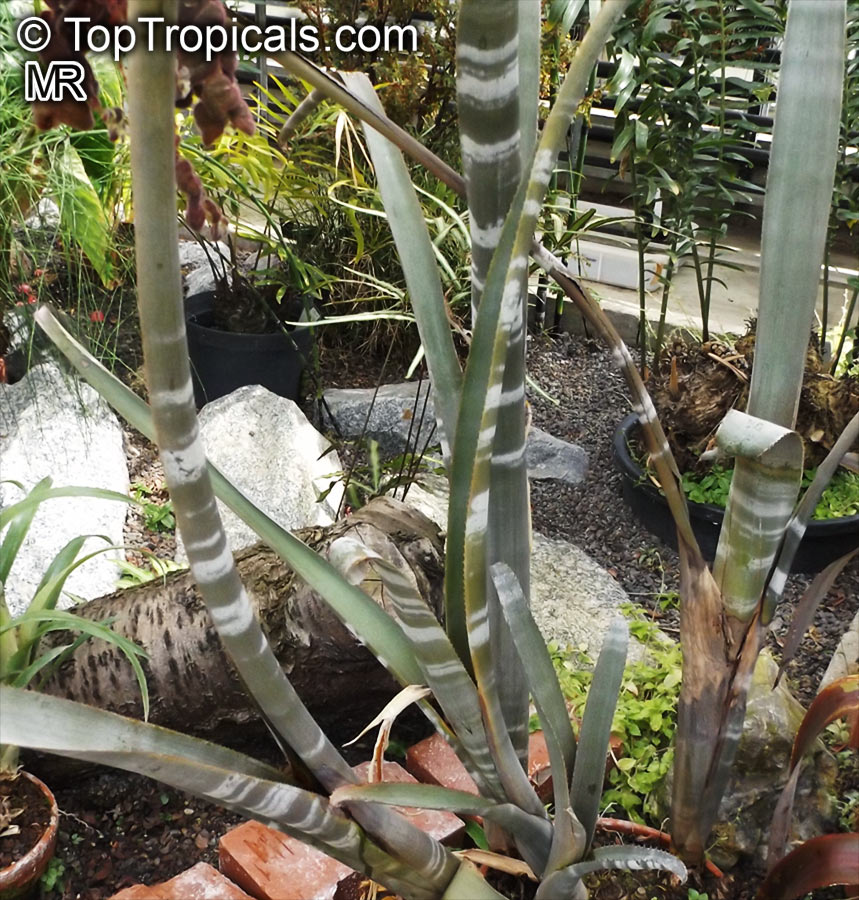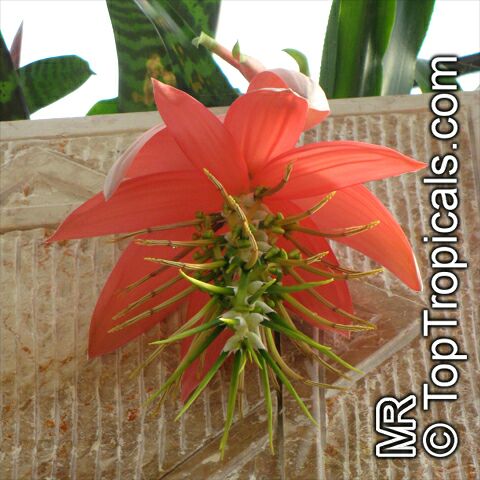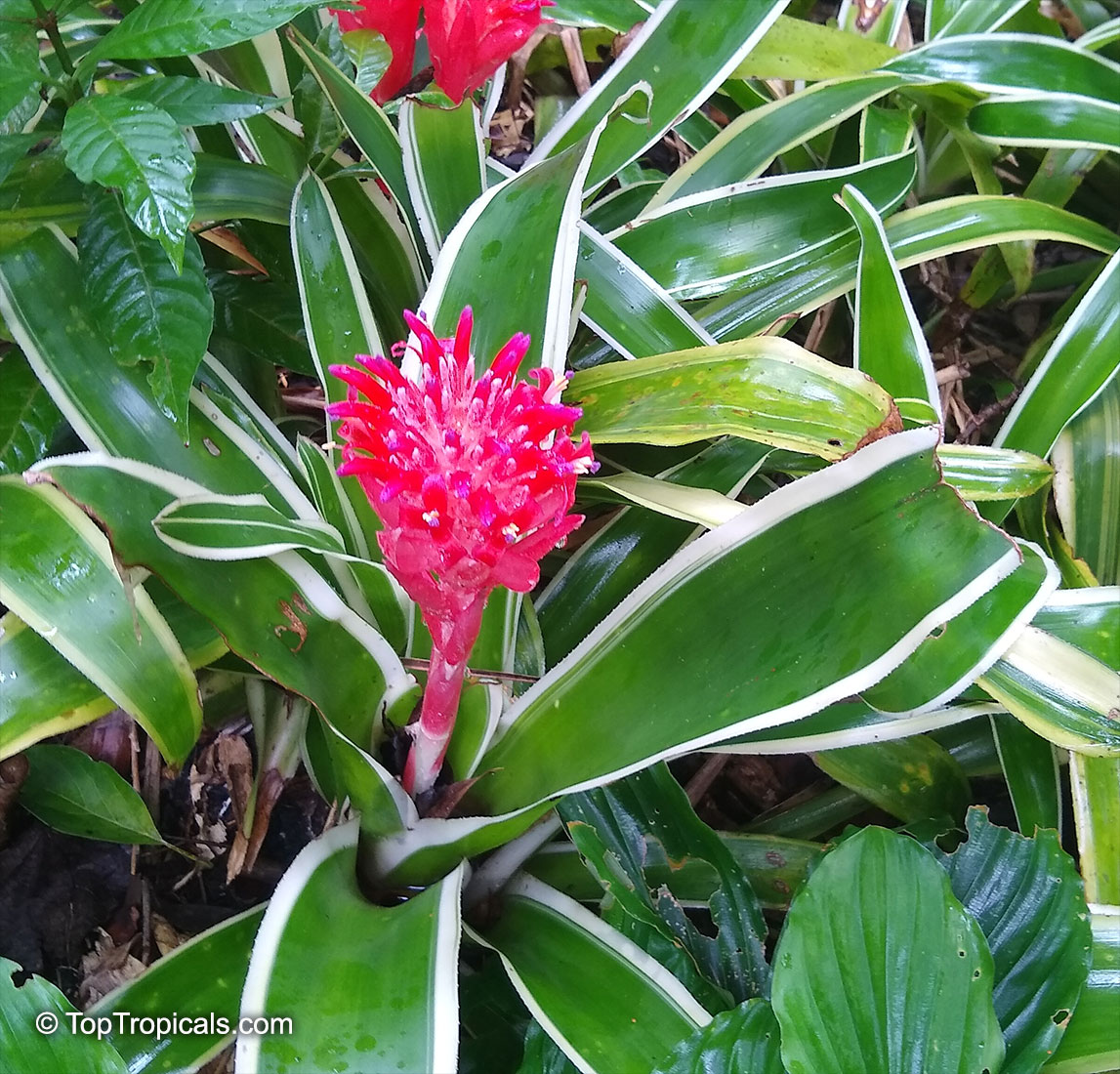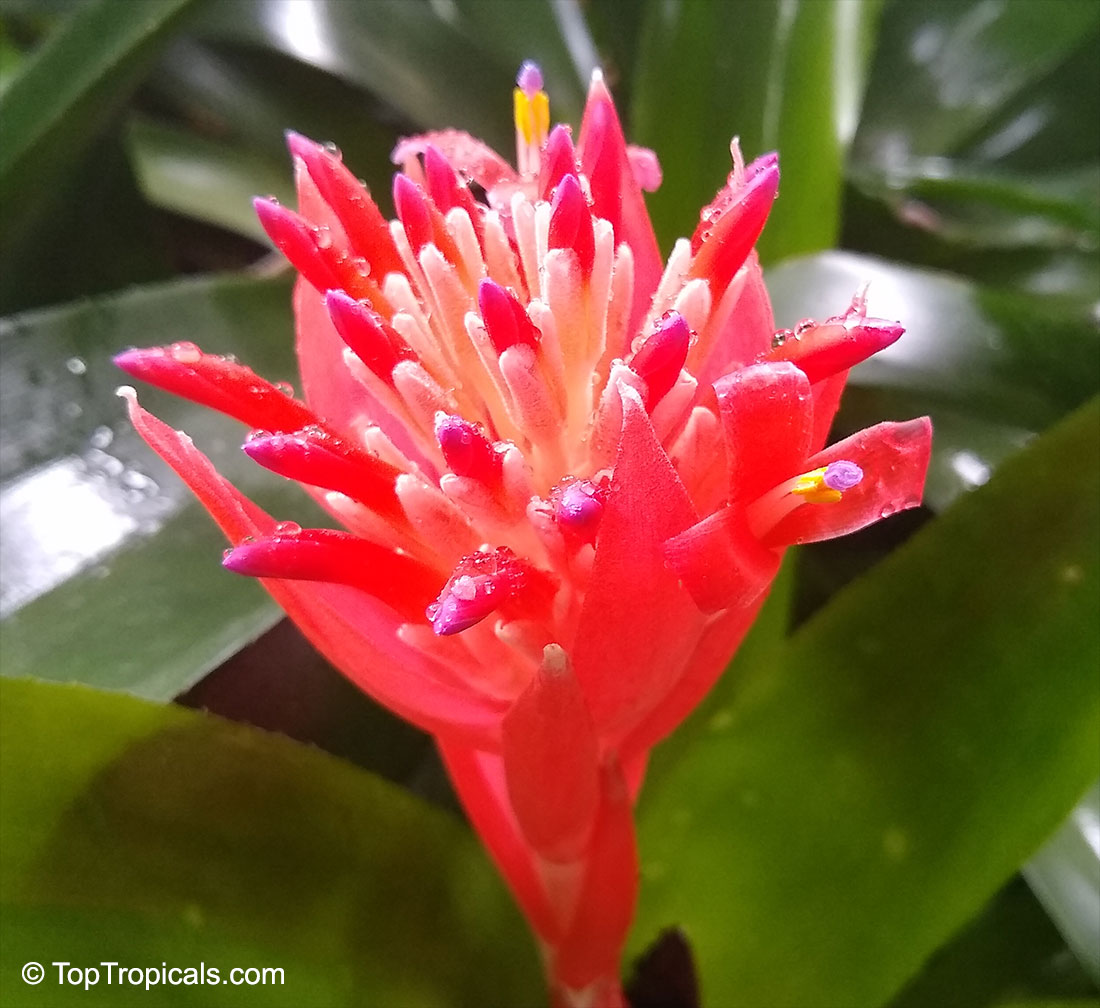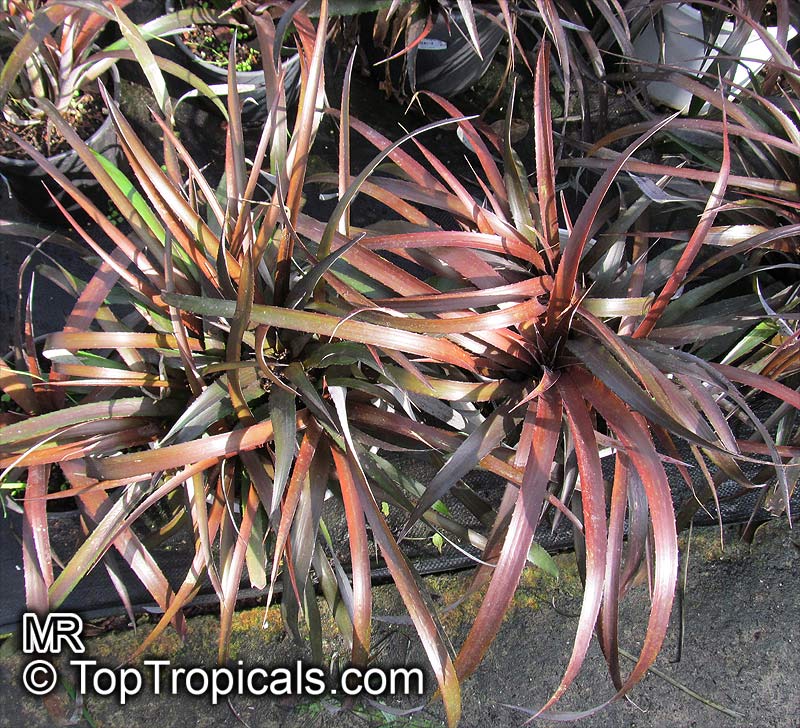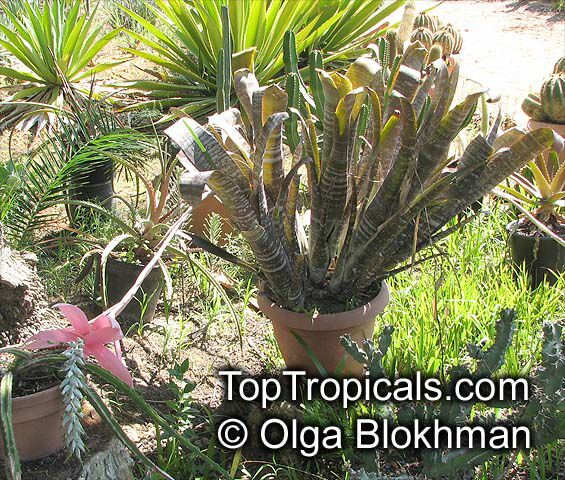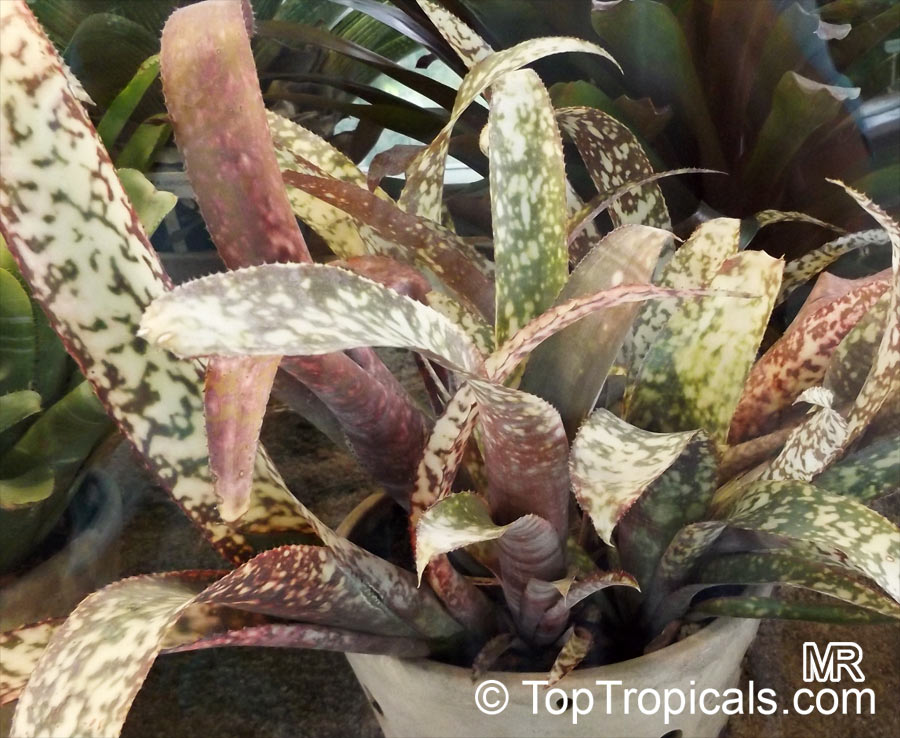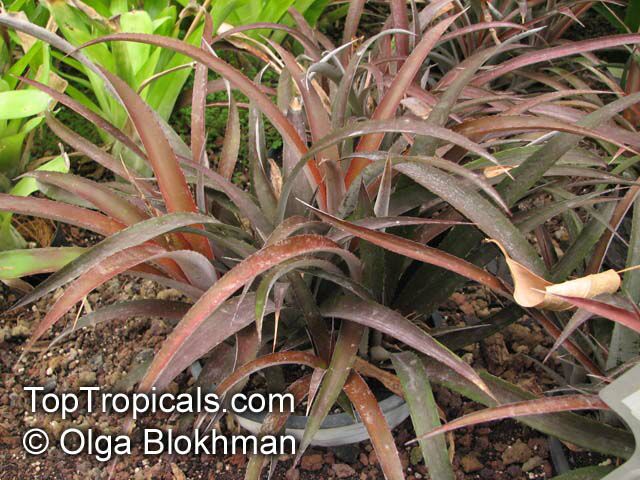Billbergia sp. (Bromeliad Queen of Tears)
Top Tropicals Plant Encyclopedia
Botanical name: Billbergia sp.
Common names: Bromeliad Queen of Tears, Friendship Plant
Family: Bromeliaceae
Subfamily: Bromelioideae
Origin: Mexico, Argentina and Brazil









Billbergia was established as a genus in 1821 by Thunberg. The name is a tribute to the Swedish botanist Gustav Johannes Billberg. The flowers range from virtually colorless to deep violet, some are night-bloomers and a few are fragrant. According to the petal habit Billbergias are divided into two groups: billbergia, in which the petals recurve slightly and helicodea, in which the petals coil back like a spring. The seeds are contained in hard berries just below the flowers. Pups are produced on short stolons so that a clump forms quickly. Billbergias in habitat are generally epiphytic and may also grow on rock. In culture some (B. nutans, B. pyramidalis) also thrive as terrestrials in ordinary (well draining!) garden soil. They prefer a small pot. Billbergias are usually grown "hard"-strong light to enhance leaf coloration and markings, little or no fertilizer to ensure that the plant does not outgrow its optimum size and color.
Most bromeliads are epiphytes in their native rainforest habitat. They have small roots, mainly used for anchoring themselves on trees, so these tree-dwelling plants gather moisture and nutrients through their leaves. You can encourage bromeliads to flower by adding a pinch of Epsom salts (magnesium sulfate) to the water or fertilizer. Keep it in partial shade. Water the center of the rosette and keep room-temperature rainwater or distilled water in its urn (center of the rosette) at all times. Water soil just enough to keep the roots barely moist. Empty old water from the urn once a month and promptly replace it with fresh water. Do not soak base of plant, which can lead to root rot. In fall and winter, keep the soil slightly drier. Soil: orchid mix.
Billbergia have been crossed with Cryptanthus
and the resulting hybrids Cryptbergia are intermediate in habit between the two genera.
